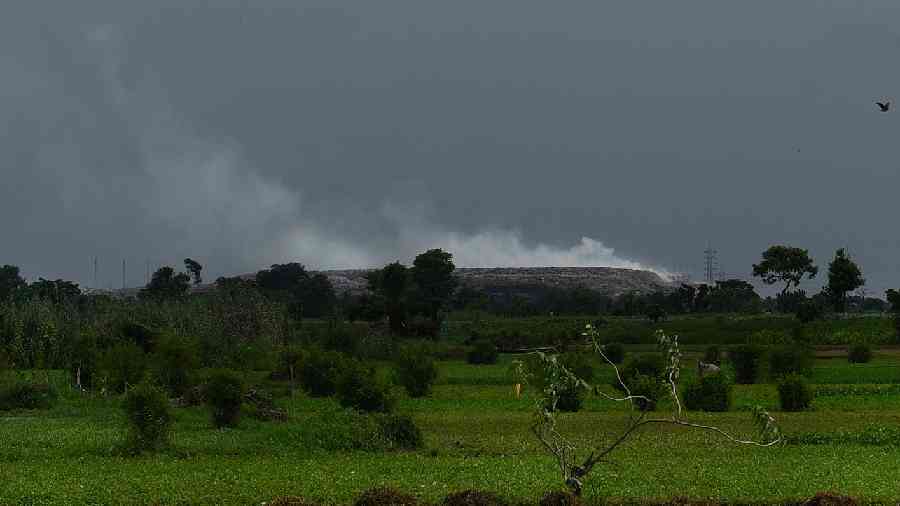Plumes of white smoke enveloped the sky above the Dhapa waste disposal ground on Wednesday afternoon. Residents of the area alleged the smoke caused irritation in their eyes or breathing problems.
The smoke, visible from EM Bypass, could have been avoided if waste was segregated at the source in Kolkata and measures were taken to use the biodegradable waste as raw material to produce energy and manure, experts said.
Kolkata Municipal Corporation (KMC) has introduced waste segregation at source in only 27 wards out of the 144, in the city.
Almost the entire biodegradable waste generated in Kolkata is dumped at Dhapa.
Only a very small portion of the waste is used to produce bio CNG and manure.
A KMC official said that the biodegradable waste in Dhapa had accumulated over decades.
Waste management specialists said the smoke that was seen over the Dhapa ground on Wednesday was a result of the burning of methane gas, which is formed when biodegradable waste like fruits, vegetables, remnants of cooked food, flowers and leaves remain without contact with air for long with layers of waste dumped over them.
The fire that led to Wednesday’s smoke may not have been lit by anyone because methane burns on its own when it comes in contact with air, said Sunil Pandey, director of the waste management division at The Energy and Resources Institute (Teri).
“Methane is formed when biodegradable wastes degrade without contact with air as layers of the new waste pile over them. Once the methane gas is formed, it escapes through any fissure it finds,” said Pandey.
“If there is any source of fire close to the escape route, methane acts as fuel. Besides, methane can also burn on its own when it comes in contact with air. It can auto-ignite,” Pandey added.
Residents of Silver Spring, an apartment off EM Bypass, reported a burning smell in the air when smoke rises from the Dhapa ground.
The situation worsens during winter. Because of the lesser wind speed and other weather phenomena, the smoke and particles float close to the ground.
“We feel irritation in our eyes and nose. Some people also face breathing difficulties,” said a resident of Silver Spring.
The methane gas is also a contributor to global warming, said Pandey.
The more the volume of biodegradable wastes in the Dhapa ground, the more the quantity of methane gas generated.
Smoke rising from large waste disposal grounds is a problem encountered across the country, said Pandey.
An engineer of the KMC said that fire tenders visit the Dhapa waste disposal ground daily to sprinkle water and douse the flames. Yet, the fire burns and smoke rises from the wastes whenever there is a dry spell.
The smoke emanating from the wastes on Wednesday gave an indication of what lies ahead as winter approaches.
The absence of rain will mean more such fires would occur and the resultant smoke will release pollutants into the air.
An official of the state pollution control board said that fire tenders are used more frequently between late November and February.
A senior KMC official said they have already started to mine the legacy waste and separate the items that can be recycled.
“We will soon introduce waste segregation across the city,” said the official.
Time will tell how long that takes.
